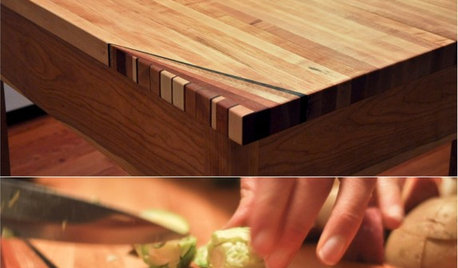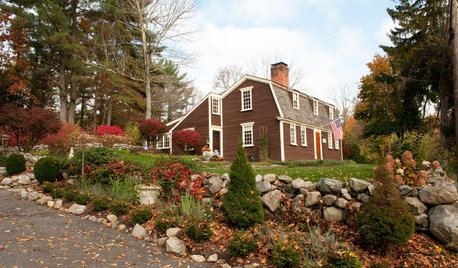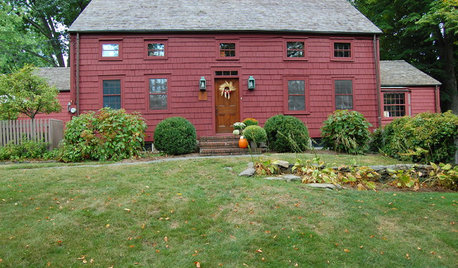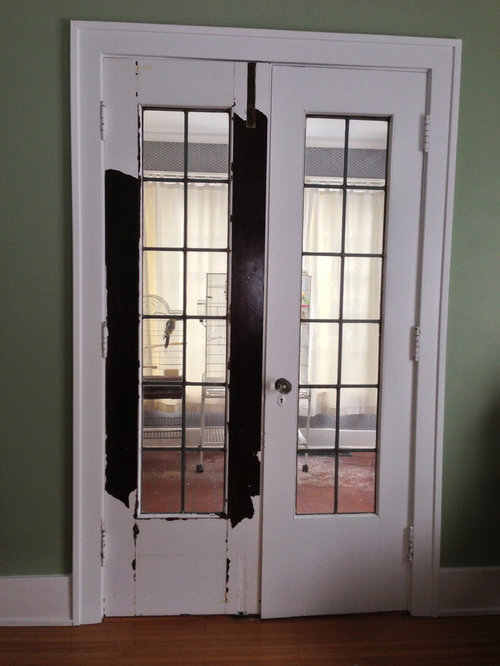Refinishing Woodwork
vjrnts
11 years ago
Related Stories

GREAT HOME PROJECTSWhat to Know Before Refinishing Your Floors
Learn costs and other important details about renewing a hardwood floor — and the one mistake you should avoid
Full Story
COLORWake Up Your Woodwork With Black
Strike a dramatic note with black window frames, shelves, stairs and more, making features stand out or blend in
Full Story
WOODWORKINGHow to Clean and Care for Your Butcher Block
Keep butcher block counters and boards looking sharp as a knife — and sanitized for safe food prep — with this advice from a pro woodworker
Full Story
TRADITIONAL HOMESHouzz Tour: Redo Shines Light on 19th-Century Newport Beauty
The renovated Rhode Island home boasts gorgeous woodwork, an appealing wraparound porch and a newly spacious kitchen
Full Story
LIVING ROOMSRoom of the Day: Dark and Daring Pay Off in a Den Redesign
Indigo walls and woodwork, textured furnishings, task lighting and a media center turn a neglected room into a family hangout
Full Story
HOUZZ TOURSMy Houzz: Old-World European Flair in Oregon
Custom woodwork, stained glass and Arts and Crafts touches create warm, earthy interiors in a ranch-style home
Full Story
TRADITIONAL HOMESMy Houzz: Loving Efforts Restore a 1787 Farmhouse
Careful attention to original details preserves and revives a vacant New England home with a considerable history
Full Story
ECLECTIC HOMESMy Houzz: A Pre-Revolutionary Home for a Modern Family
A dedicated DIYer mixes colonial style with today's comforts to create a meaningful home for 5
Full Story
TASTEMAKERS3 Extreme Chair Makeovers — Plus DIY Reupholstering Tips
Spoiled seats and forlorn frames get kicked to the curb by a Philadelphia reupholstery whiz with a flair for salvaging and artistic designs
Full Story









columbusguy1
schoolhouse_gw
Related Professionals
Lebanon Home Remodeling · Home Remodeling · Barrington Hills Kitchen & Bathroom Designers · Southbridge Kitchen & Bathroom Designers · Minnetonka Mills Kitchen & Bathroom Remodelers · Apex Kitchen & Bathroom Remodelers · Glendale Kitchen & Bathroom Remodelers · Omaha Kitchen & Bathroom Remodelers · Placerville Kitchen & Bathroom Remodelers · Richland Kitchen & Bathroom Remodelers · South Jordan Kitchen & Bathroom Remodelers · Gibsonton Kitchen & Bathroom Remodelers · Baton Rouge Architects & Building Designers · Hillcrest Heights Architects & Building Designers · South Elgin Architects & Building Designerssombreuil_mongrel
vjrntsOriginal Author
columbusguy1
sombreuil_mongrel
Fori
MsKitty31
brickeyee